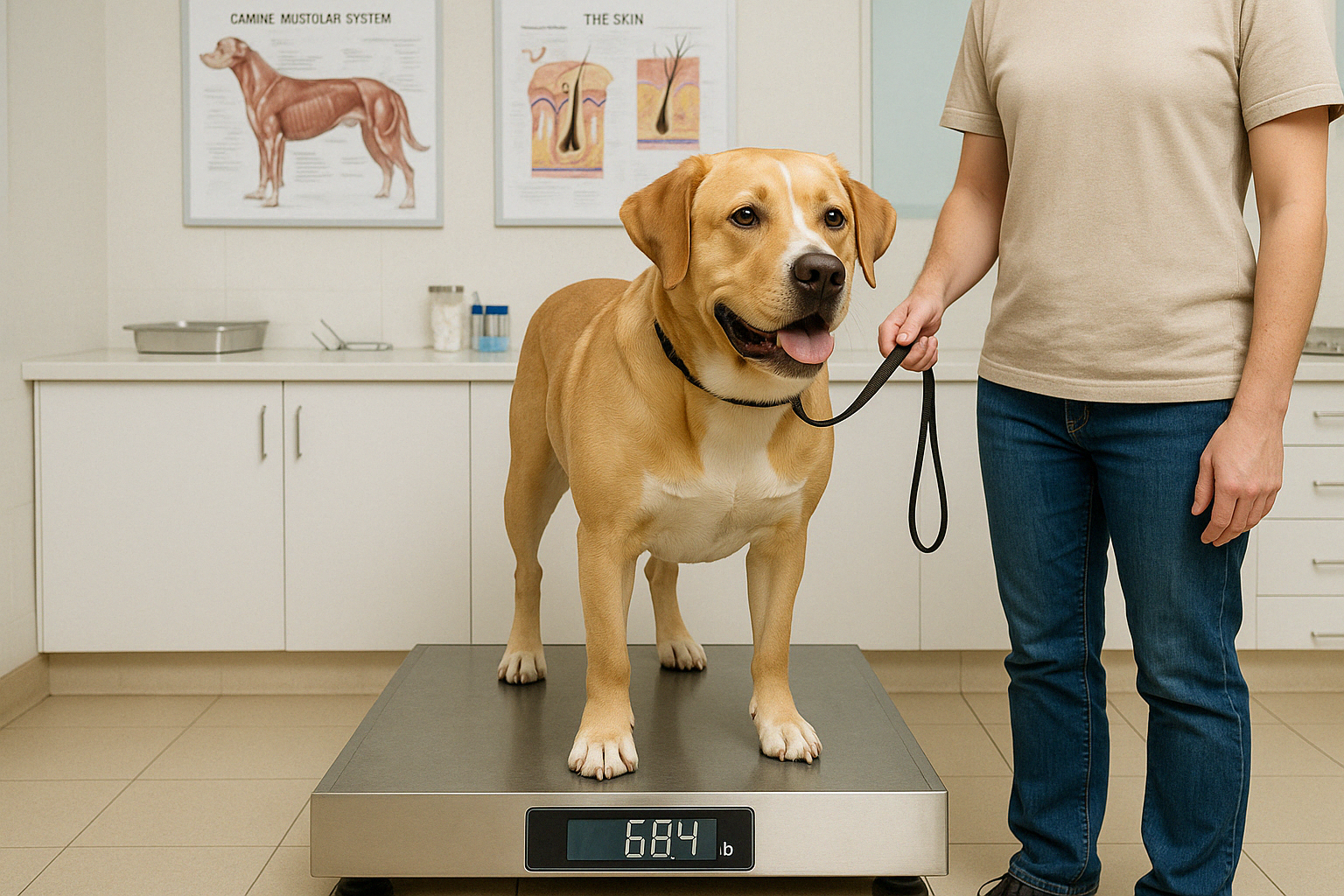Obesity is one of the most common and preventable health issues affecting dogs in the United States. An estimated 50–60% of pets are overweight or obese. Excess weight strains joints, impairs heart and lung function, increases diabetes and pancreatitis risk, and shortens lifespan. The good news is that with balanced nutrition, strict portion control, and regular exercise, you can help your dog achieve and maintain a healthy weight for a happier, longer life.
Why a Healthy Weight Matters
Maintaining an ideal body condition supports:
Joint and Bone Health
Excess weight accelerates arthritis and joint degeneration, leading to pain and reduced mobility.
Cardiovascular and Respiratory Function
A lean body eases the workload on the heart and lungs, improving stamina and reducing fatigue.
Metabolic and Digestive Health
Optimal weight profiles lower the risk of insulin resistance, diabetes, and pancreatic inflammation. Better digestion and nutrient absorption follow.
Quality of Life and Longevity
Healthy-weight dogs are more active, playful, and engaged, often living years longer than their overweight counterparts.
Even a 10–20% excess body weight significantly elevates disease risk. Managing weight proactively allows earlier detection of other conditions that weight gain can mask.
Assessing Your Dog’s Body Condition
Veterinarians use a nine-point Body Condition Score (BCS) scale, where 4–5 indicates ideal condition.
Visual and Palpation Check
- Ribs: You should feel (but not see) the ribs under a thin layer of fat with light pressure
- Waist: A visible waist should appear when viewed from above
- Abdominal Tuck: The belly should slope upward behind the ribcage when viewed from the side
Signs of Overweight or Obesity
- No discernible waist or abdominal tuck
- Rounded or barrel-shaped silhouette
- Difficulty rising, reluctance to exercise, or waddling gait
If your dog falls above BCS 5, consult your veterinarian for a personalized weight-loss plan.
Determining Your Dog’s Caloric Needs
Calories in versus calories out is the core principle. Start by calculating Resting Energy Requirement (RER) in kilocalories per day:
RER = 70 × (body weight in kg)^0.75
Convert pounds to kilograms: 1 kg = 2.2 lb
RER = 70 × (weight in pounds ÷ 2.2)^0.75
Apply an Activity Factor:
- 1.2–1.4 for senior or sedentary dogs
- 1.6 for moderately active pets
- 2.0–2.5 for highly active or working dogs
Example: A 50-lb moderately active dog
50 ÷ 2.2 ≈ 22.7 kg
RER ≈ 70 × (22.7)^0.75 ≈ 742 kcal
Daily requirement ≈ 742 × 1.6 ≈ 1,187 kcal/day
Portion Control and Feeding Guidelines
Measuring Food Accurately
- Always use a standard 8-oz measuring cup
- Avoid estimating; small errors lead to significant caloric excess
- Check food label for kcal per cup (e.g., 350 kcal/cup)
Treat Allowance
Treats should not exceed 10% of daily calories:
- Small dog biscuit: 30–50 kcal
- Mini bully stick: 250–300 kcal
- Cheese cube: ~75 kcal
Healthier Substitutes:
- Baby carrots: 5 kcal each
- Apple slices (no seeds): 4–6 kcal per slice
- Blueberries: 1 kcal each
- Air-popped popcorn (no oil): 5 kcal per cup
Always subtract treat calories from your dog’s daily total.
Feeding Schedule and Structure
- Divide daily allowance into 2–3 meals
- Avoid free-feeding; establish consistent mealtimes
- If constant hunger occurs, ask your vet about adding fiber or switching to a high-volume, low-calorie diet
Selecting the Right Diet
Weight-management formulas deliver satiety with fewer calories:
- High protein, low fat to preserve lean muscle
- Increased fiber to promote fullness
- Added L-Carnitine to support fat metabolism
- AAFCO-approved for complete and balanced nutrition
Avoid generic “lite” labels with vague claims. Veterinary diets are often more effective and supported by clinical testing.
Exercise and Activity Recommendations
Why Exercise Matters
Diet alone is insufficient. Activity burns calories, supports lean mass, and improves overall health and mood.
Recommended Daily Activity by Size
- Small Breeds: 20–30 minutes of brisk play or walks
- Medium Breeds: 30–60 minutes of walking, fetch, or agility
- Large Breeds: 1–2 hours of structured activity, split into sessions
Creative Fitness Ideas
- Two daily brisk walks
- Games like fetch, tug-of-war, or hide-and-seek
- Stair climbing (for appropriate dogs)
- Water therapy: swimming or hydrotherapy
- Puzzle feeders and treat-dispensing toys
Increase exercise gradually—about 10–15% weekly. Get veterinary clearance before starting new programs, especially for overweight or senior dogs.
Monitoring Progress and Adjusting the Plan
Tracking Metrics
- Weigh-Ins: Use a pet scale at home or monthly vet check
- Photos: Take monthly front and side photos
- Body Condition Score: Reassess monthly
- Journal: Track food intake, treats, and exercise daily
Ideal Weight-Loss Rate
Target 1–2% body weight loss per week
Example: 50-lb dog = 0.5–1.0 lb lost per week
Avoid fast weight loss to prevent muscle loss and metabolic slowdown
Troubleshooting Stalled Progress
If progress stalls:
- Re-weigh food and recalculate caloric intake
- Audit treats and training snacks
- Increase activity by 10–20%
- Rule out underlying health issues (thyroid, arthritis, Cushing’s)
- Try prescription weight-loss diets or appetite-suppressing medications
- Divide meals into 3–4 portions for improved metabolism
Patience and consistency are essential.
When to Seek Professional Support
Work with your veterinarian for safe, individualized guidance. Seek help if your dog:
- Loses more than 3% body weight per week
- Shows signs of illness (lethargy, vomiting, diarrhea)
- Has concurrent medical conditions
- Needs prescription diets or behavior modification
A veterinary nutritionist or behaviorist can help with complex cases or weight plateaus.
Final Thoughts
Helping your dog achieve and maintain a healthy weight is one of the most impactful investments you can make in their health. Through portion control, high-quality nutrition, regular physical activity, and consistent tracking, you’ll give your dog the gift of better mobility, longer lifespan, and daily vitality.
Partner with your veterinarian, celebrate every milestone, and enjoy the renewed energy and quality of life that a lean, fit dog brings to your home.

